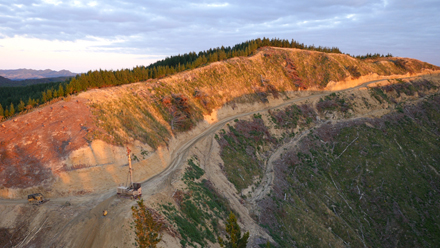
Te Uru Rākau (Forestry New Zealand) has announced funding of almost NZ$36 million through the Hill Country Erosion Fund (HCEF) to enable much-needed erosion control in the regions. The HCEF supports proposals to protect the most vulnerable hill country landscapes, where the main treatment is tree planting. Source: Timberbiz
“We’re pleased by the level of interest from councils, with 12 applications received in this latest round – four of which were from regions that had not previously applied,” Julie Collins, deputy director-general of forestry and head of Te Uru Rākau said.
“It shows the importance they are placing on sustainable land management and treating erosion in their regions.”
Ms Collins says the loss of productive land through erosion has a significant impact on the environment and the sustainability of New Zealand land.
“The annual cost associated with hill country erosion is estimated to be between $100 million and $150 million through lost soil, nutrients and production, and damaged infrastructure and waterways,” Ms Collins said.
“The 12 new HCEF programs will take place between July 2019 and June 2023 and will deliver significant improvements in erosion control. For example, these range from building regional capacity and capability to plant trees, to farm planning and land treatments including planting poplars, willows and other indigenous and exotic species.
“We estimate that over four years, these programs will result in more than 13 million trees being planted and treatment of more than 21,000 hectares of land.
“These will contribute to the Government’s One Billion Trees Program, and deliver environmental and a range of other benefits across the country.”
The HCEF was launched during 2007/2008. Funding is contested in a 4-yearly cycle, aligned with planning cycles for regional councils. The previous funding round was in 2014. Since the HCEF was launched, the fund has enabled erosion treatment on more than 40,000 hectares of land.
The HCEF takes a total catchment approach involving landowners and community members to identify issues and create solutions within their own catchments.
Regional councils and landowners work together to identify the most suitable land use for their erosion-prone land, then develop and implement appropriate treatment plans. The main erosion treatment is tree planting, including appropriate species for natural vegetative cover.
A one-off NZ$1.8 million funding round was also held in June 2018 for smaller HCEF projects to be completed by 30 June 2019. Funding was awarded to five regional council partners: Northland, Horizons, Wellington, Nelson and Marlborough.
In the 2014 HCEF funding round, MPI awarded $8.8 million between 6 regional councils.
These regional councils, along with landowners, are contributing a total of NZ$35.7 million towards a total budget of NZ$44.5 million between 2015 and 2019. This will enable planting of around 6.4 million trees.







